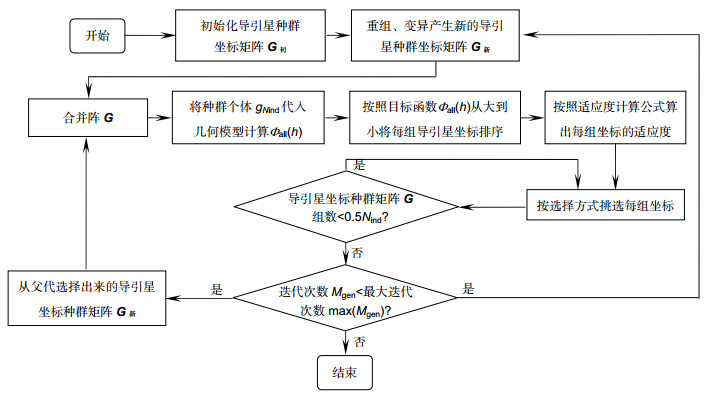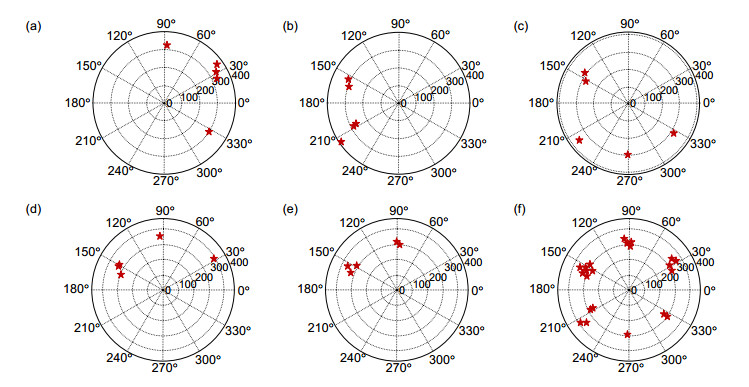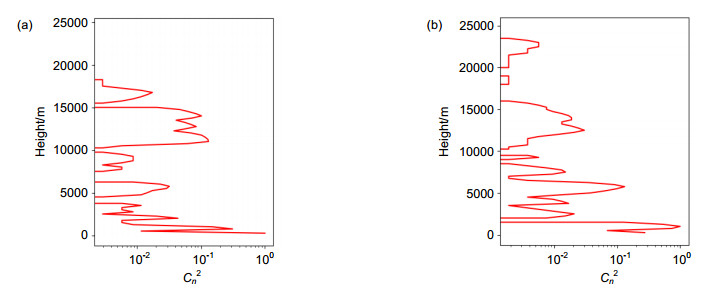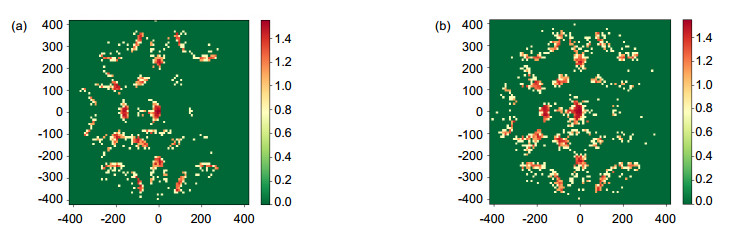Optimizing the location of multiple laser guide stars in ground layer adaptive optical systems
-
摘要:
对地面层自适应光学系统而言,多采用呈正多边形排列的多颗激光导引星星座作为参考来测量大气湍流对系统的影响。针对多颗激光导引星应当如何排布的问题,本文采用简化的地面层自适应光学几何模型作为系统性能评价函数,通过遗传算法优化获得不同湍流廓线下导引星的最优分布。同时,采用多进程、Numba库和多线程提高海量大气湍流廓线下对整个系统性能的估计速度。利用上述方法,以一个视场为14'的地面层自适应光学系统为例,用实测的大气湍流廓线数据分析了不同天文观测台址下湍流廓线与最优位置分布的关系。研究结果表明,同一台址下不同数目导引星的最优位置分布差异不大,其统计最优位置均呈中心一颗或角半径接近视场边缘的正多边形分布;不同台址下的导引星最优位置分布差异明显;大气湍流廓线测量的空间分辨率直接影响系统性能评价结果:其测量结果中的等效层数越多,导引星位置分布越接近规则的多边形。
 Abstract:
Abstract:At present, the ground layer adaptive optical systems are using multiple laser guide stars arranged in regular polygons as reference targets to measure the effects of atmospheric turbulence. Obtaining the optimal position of laser guide stars becomes an interesting problem to analyze. This paper proposes a method to obtain the optimal position of laser guide stars by using a genetic algorithm as the optimization algorithm and a simplified geometry model of the ground layer adaptive optic system as the evaluation function. Furthermore, multi-process, Numba library, and multi-thread techniques methods are used to accelerate calculation speed. Based on these methods, real atmospheric turbulence profiles are used to analyze the relationship between the optimal position of laser guide stars with different numbers and the different atmospheric turbulence profiles from the same site, through an example of a ground layer adaptive optics system with 14 arcmin field of view. The results show that the optimal position of laser guide stars in the same site is almost the same and their statistically optimal positions are all regular polygon. Besides, we also find that the spatial resolution of turbulence profiles has strong effects to positions of laser guide stars, showing that the more equivalent layers in the measurement results, the closer the position distribution of laser guide stars is to the regular polygon.
-

Overview: The ground layer adaptive optic system (GLAO) uses wavefront sensors to measure wavefront errors from several different field of views and corrects the 'mean' wavefront errors from these measurements with a deformable mirror, which could slightly increase image quality in a wide field of view. The GLAO is particular useful for multi object observations, such as multi-object spectroscopic observations and wide field astrometry or photometry. The GLAO system normally assumes that there is a ground layer atmosphere turbulence in a fixed height, and thus it uses several laser-guide stars with fixed positions in the field of view to measure wavefront errors from that layer. However, the atmospheric turbulence is a stochastic medium and the height and strength of the ground layer will change continuously in real applications. Does there still exist optimal positions for these laser guide stars? Calculating the performance of the GLAO system with different configurations under different turbulence profiles is a straight forward method to obtain the optimal position of laser guide stars, but it will cost a very long time. In this paper, a simplified geometric model is proposed to evaluate the performance of the GLAO system. The genetic algorithm is used to obtain optimal positions of laser guide stars for different turbulence profiles from real measurements of different sites. Because there is a huge amount of atmospheric turbulence profiles, multi-processing, Numba library, and multi-thread techniques are used to further accelerate the computation speed up 3240 times that of the ordinary method. Based on the aforementioned methods, we have evaluated the GLAO performance with laser guide stars of different locations under different turbulence profiles from Paranal and Mauna Kea. We assume the turbulence profiles as random variables of independent and identically distributed and random sample a small batch (2000 turbulence profiles from different sites) to estimate the optimal position of laser guide stars. We have found that the optimal position of laser guide stars in the same site is almost the same and their statistically optimal positions are all regular polygon. However, we have also found that the spatial resolution of atmospheric turbulence profile measurements has strong impacts to the performance evaluation, showing that higher spatial resolution can lead to a more concentrated distribution of the laser guide stars. It indicates that it is necessary to obtain enough high-resolution turbulence profile data to better evaluate site conditions for China future large telescopes with GLAO systems.
-

-
图 6 一条湍流廓线数据下5次激光导引星位置结果。(a)~(e)分别为5次相同条件下的导引星位置结果;(f) 5次位置的统计结果
Figure 6. The position results of the laser guiding star for five measurements with single turbulent profile data. (a)~(e) The results of guiding star positions under the same condition for five measurements respectively; (f) Total positional results of five measurements
表 1 大气湍流数据情况
Table 1. Atmospheric turbulence data
台址 测量方法 数据量 等效层数 智利帕拉纳尔 Stereo-SCIDAR 7563 100 夏威夷莫纳克亚山 MASS 163208 6 表 2 帕拉纳尔台址下的湍流数据格式
Table 2. Turbulence data format in paranal
高度/m 大气折射率结构常Cn2/m^(1/3) 风速/(m/s) 风方向/(°) 0 2.247E-14 11.474 347.4 250 2.068E-14 10.345 332.9 ... ... ... ... 表 3 莫纳克亚山台址下的湍流数据格式
Table 3. Turbulence data format in Mauna Kea
L 3 0.5 7.99E-14 5.9 1.47E-14 9.9 4.28E-14 X 6 0.5 6.97E-14 1.0 8.89E-22 2.0 1.09E-20 4.0 3.49E-15 8.0 4.90E-14 16.0 6.63E-15 ... 表 4 地面层自适应光学系统的参数
Table 4. Parameters of the ground layer adaptive optical system
参数 数值 望远镜口径/m 10 激光导引星数目 5 激光导引星高度/km 90 视场角/(') 14 大气相干长度r0/m 0.1 外尺度L0/m 10 表 5 不同加速方案的运行时间结果对比
Table 5. Comparison of running time with different acceleration schemes
s 加速方案 子种群数目 1 10 15 20 30 40 50 100 几何模型:多进程+Numba 3.5 33.5 48 65 96 128 164 321 几何模型:多进程+Numba遗传算法:多线程 3.2 32.5 47 64 97.5 129 164 320 几何模型:多线程+Numba遗传算法:多进程 15 15 18 21 25 38 43 78 -
[1] Osborn J, Wilson R, Butterley T, et al. Profiling the surface layer of optical turbulence with SLODAR[J]. Monthly Notices of the Royal Astronomical Society, 2010, 406(2): 1405–1408. http://www.wanfangdata.com.cn/details/detail.do?_type=perio&id=10.1111/j.1365-2966.2010.16795.x
[2] Rigaut F. Ground-conjugate wide field adaptive optics for the ELTs[C]//European Southern Observatory Conference & Workshop, 2002.
[3] Hart M, Milton N M, Baranec C, et al. A ground-layer adaptive optics system with multiple laser guide stars[J]. Nature, 2010, 466(7307): 727–729. doi: 10.1038/nature09311
[4] Rabien S, Angel R, Barl L, et al. ARGOS at the LBT. Binocular laser guided ground-layer adaptive optics[J]. Astronomy and Astrophysics, 2019, 621: 21.
[5] 李敏, 江长春, 魏凯, 等. TMT激光导引星系统设计[J].光电工程, 2018, 45(3): 170735. doi: 10.12086/oee.2018.170735
Li M, Jiang C C, Wei K, et al. Design of the TMT laser guide star facility[J]. Opto-Electronic Engineering, 2018, 45(3): 170735. doi: 10.12086/oee.2018.170735
[6] 姜文汉.自适应光学发展综述[J].光电工程, 2018, 45(3): 170489. doi: 10.12086/oee.2018.170489 CNKI:SUN:GDGC.0.2018-03-002
Jiang W H. Overview of adaptive optics development[J]. Opto-Electronic Engineering, 2018, 45(3): 170489 doi: 10.12086/oee.2018.170489 CNKI:SUN:GDGC.0.2018-03-002
[7] 饶长辉, 朱磊, 张兰强, 等.太阳自适应光学技术进展[J].光电工程, 2018, 45(3): 170733. doi: 10.12086/oee.2018.170733
Rao C H, Zhu L, Zhang L Q, et al. Development of solar adaptive optics[J]. Opto-Electronic Engineering, 2018, 45(3): 170733. doi: 10.12086/oee.2018.170733
[8] 周昶宁, 阎吉祥, 俞信, 等.自适应光学系统中大气湍流的模型分析与计算机仿真[J].光学技术, 2005, 31(2): 249–251. http://www.wanfangdata.com.cn/details/detail.do?_type=perio&id=gxjs200502028
Zhou C N, Yan J X, Yu X, et al. Model analysis and computer simulation of atmosphere turbulence in adaptive optics system[J]. Optical Technique, 2005, 31(2): 249–251. http://www.wanfangdata.com.cn/details/detail.do?_type=perio&id=gxjs200502028
[9] Jia P, Osborn J, Kong L T, et al. Modelling synthetic atmospheric turbulence profiles with temporal variation using Gaussian mixture model[J]. Monthly Notices of the Royal Astronomical Society, 2018, 480(2): 2466–2474. doi: 10.1093/mnras/sty1951
[10] 蔡冬梅, 王昆, 贾鹏, 等.功率谱反演大气湍流随机相位屏采样方法的研究[J].物理学报, 2014, 63(10): 104217. http://www.wanfangdata.com.cn/details/detail.do?_type=perio&id=wlxb201410031
Cai D M, Wang K, Jia P, et al. Sampling methods of power spectral density method simulating atmospheric turbulence phase screen[J]. Acta Physica Sinica, 2014, 63(10): 104217. http://www.wanfangdata.com.cn/details/detail.do?_type=perio&id=wlxb201410031
[11] 张智露.室内大气湍流模拟系统的研究[D].太原: 太原理工大学, 2017.
Zhang Z L. Research on the simulation system of indoor atmospheric turbulence[D]. Taiyuan: Taiyuan University of Technology, 2017.
http://cdmd.cnki.com.cn/Article/CDMD-10112-1017832272.htm [12] 刘超.激光导星高精度波前探测与重构方法研究[D].长春: 中国科学院长春光学精密机械与物理研究所, 2018.
Liu C. Study on laser guide star high precise wavefront sensing and reconstruction methods[D]. Changchun: Changchun Institute of Optics, Fine Mechanics and Physics Chinese Academy of Sciences, 2018.
http://cdmd.cnki.com.cn/Article/CDMD-80139-1018189010.htm [13] Jia P, Basden A, Osborn J. Ground-layer adaptive-optics system modelling for the Chinese large optical/infrared telescope[J]. Monthly Notices of the Royal Astronomical Society, 2018, 479(1): 829–843. http://www.wanfangdata.com.cn/details/detail.do?_type=perio&id=76e615738ce923c4e518d23a51d79b47
[14] 王红帅, 姚永强, 刘立勇.大气光学湍流模型研究进展[J].天文学进展, 2012, 30(3): 362–377. http://www.wanfangdata.com.cn/details/detail.do?_type=perio&id=twxjz201203007
Wang H S, Yao Y Q, Liu L Y. A review of atmospheric optical turbulence modeling research[J]. Progress in Astronomy, 2012, 30(3): 362–377. http://www.wanfangdata.com.cn/details/detail.do?_type=perio&id=twxjz201203007
[15] Jia P, Cai D M, Wang D, et al. Simulation of atmospheric turbulence phase screen for large telescope and optical interferometer[J]. Monthly Notices of the Royal Astronomical Society, 2015, 447(4): 3467–3474. doi: 10.1093/mnras/stu2655
[16] Osborn J, Wilson R W, Sarazin M, et al. Optical turbulence profiling with stereo-SCIDAR for VLT and ELT[J]. Monthly Notices of the Royal Astronomical Society, 2018, 478(1): 825–834. doi: 10.1093/mnras/sty1070
[17] Els S G, Schoeck M, Seguel J, et al. The Multi Aperture Scintillation Sensor (MASS) used in the site selection of the Thirty Meter Telescope (TMT)[J]. Proceedings of SPIE, 2008, 7012: 701222. doi: 10.1117/12.788954
[18] 张琛, 詹志辉.遗传算法选择策略比较[J].计算机工程与设计, 2009, 30(23): 5471–5474, 5478. http://www.wanfangdata.com.cn/details/detail.do?_type=perio&id=jsjgcysj200923046
Zhang C, Zhan Z H. Comparisons of selection strategy in genetic algorithm[J]. Computer Engineering and Design, 2009, 30(23): 5471–5474, 5478. http://www.wanfangdata.com.cn/details/detail.do?_type=perio&id=jsjgcysj200923046
[19] Hussain E A, Alrajhi Y M. Accelerated genetic algorithm solutions of some parametric families of stochastic differential equations[J]. International Journal of Scientific & Technology Research, 2015, 4(1): 237–243. http://www.wanfangdata.com.cn/details/detail.do?_type=perio&id=Doaj000003899313
-


 E-mail Alert
E-mail Alert RSS
RSS
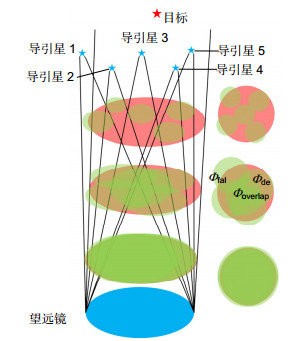
 下载:
下载:
